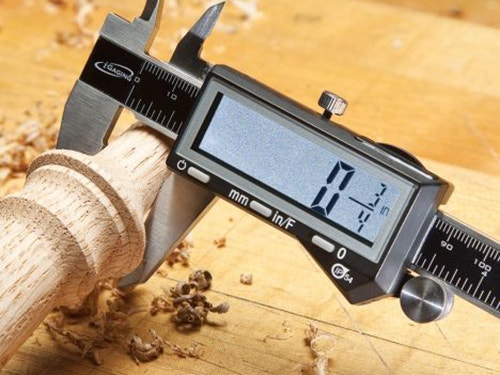Fractional Calipers - Accuracy in a Familiar Form
The more precise your woodworking becomes, the more precise your measuring tools need to be. And if you stick with woodworking long enough, in all likelyhood a time will come when you hear yourself say, "By gum, I need a caliper!"
Unless, of course, you don’t know this long-time standard of the precision woodworker's toolbox by name, in which case you'll say, "Jiminy! I need a tool with two sets of jaws and a digital or dial readout that lets me make precise measurements of inside spaces, like dadoes and mortises, and outside dimensions, like the exact thickness of lumber and veneer!"
A familiar and necessary tool in every machine shop, the caliper is used to measure short distances with extreme accuracy. Along with the two sets of jaws that measure inside and outside spaces, most calipers have a probe that at the bottom of the tool that measures depth. In the woodshop, calipers come in handy for all sorts of things: You can use them to match the width of a dado to the thickness of a particular piece of stock, check the depth of a rabbet, fine-tune your thickness planer setting, calibrate tools, and a for a host of other purposes.
The problem for many woodworkers is that most calipers only supply a decimal reading of the measurement. It’s not a very handy scheme for the many, many woodshops where measurements are delivered primarily in inches and fractions thereof. The obvious solution: a caliper with a fractional readout. Both the Fractional Digital Caliper and the more traditional Fractional Dial Caliper are especially well suited to woodshops where things like stock dimensions, plans, instructions, and conversation all tend toward fractional notation.
Which one should you get? Both are accurate well beyond any practical woodworking need, and with both you still get the decimal option, which will come in handy if you ever work with dimensions in metric form or need finer measurement capability than the fractional readout’s nearest 1/64" convention. The only real difference is the presentation format. The digital model, with its large, easy to read numbers, is likely to appeal to woodworkers who have trouble reading small print. The classic dial model is the more economical of the two. Either would be an excellent addition to any shop where extreme precision is becoming more and more of a necessity.
Keep the inspiration coming!
Subscribe to our newsletter for more woodworking tips and tricks






